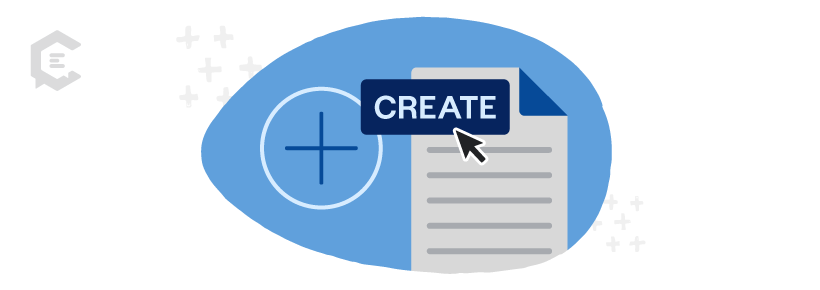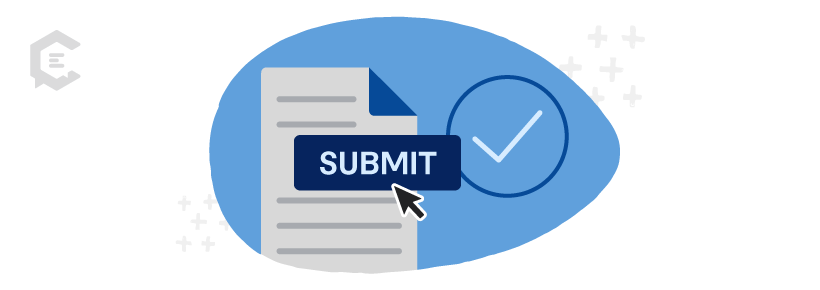If you don’t develop a clear understanding of how the platform works for freelancers, collaborating on content can be more challenging than it needs to be.

A Look at ClearVoice’s Content Creation Process
Fortunately, today I’m here to help demystify the freelance content creation workflow. When you have a clear picture of how a freelancer works through the content process, it becomes a lot easier to collaborate and share expertise, which will all contribute to the creation of a better final product.
Creating an Assignment
When an assignment is first created, the producer or customer success manager uses ClearVoice’s VoiceGraph™ digital author mapping to quickly scan through the portfolios of over 550,000 creators, looking for similar work samples. This machine-learning tool generates a list of 20 or so freelancers who may be a good fit for the project. From there, the customer success managers or producers narrow down a shortlist and send the assignment out.
If I’m on the shortlist, I’ll get an email with information about the assignment. Then, I head over to my ClearVoice dashboard to read more and see if I can take it. In some cases, the assignment is ‘first come, first served,’ while other times, the client has sent the assignment exclusively to me.
When I’m deciding whether to accept an assignment, I’ll look at the deadline, as well as the compensation and the details provided. Sometimes, if the clients haven’t provided enough details, it’s harder to know whether I’ll be a good fit for the brand voice. If I have questions, I can use the messaging tab to connect with the client or producer to get more information.
If everything looks good, I hit ‘Accept,’ and the assignment transfers to my active Assignments tab.
The Writing Process
Once it’s time for me to start writing, I’ll head over to the individual assignment page. Usually, I begin by reading the assignment instructions. There, the client or producer provides guidelines for the assignment itself and the details of the campaign so I can ensure the piece fits nicely into its existing structure.
Offering clear and straightforward creator guidelines is one of the most helpful things a client can do. This ensures that there will be no confusion over the requirements, which can lead to time-consuming revisions. If there’s ever anything that a client wants to be included in the final product, I always want to know.
Research
If there’s any brand reference material provided, I’ll spend some time looking that over. If there’s nothing provided, I’ll head over to the client’s website and spend some time examining their existing copy. This is a great way to learn their brand voice.
Regardless of the topic, research takes up a good portion of my content creation time – often more than the writing itself! I’ll start with Google to see what’s sitting at the top of the SERP and read that material to understand the topic better.
If keywords are provided, this is helpful. Otherwise, I may spend some time with simple keyword research tools to help generate a few useful SEO keywords.
Writing
Once I have a good understanding of both the topic and the client, I can start writing. Everyone does this process differently. I find creating an outline first helps. I’ll lay out a few H2s, then add in smaller H3 sections as the writing progresses. If clients have already created an outline, I’ll follow theirs.
One of the things that I appreciate most about being a freelancer is that I’m not obligated to work from 9 to 5. I get my best writing done in the morning, and by 4 p.m., my brain is often fried. Some people are the opposite and start their workdays in the mid-afternoon. There’s no wrong way to write. For me, I put on some music (I’ve really gotten into the “Dune” soundtrack lately) and start writing.
Editing
Once I have a finished article, I like to take a break before I start editing. This gives me a bit of distance from the piece and makes it easier to pick up on syntactical or grammar errors. This is also when I’ll go through and make sure that all source material is appropriately referenced or linked.
I often use tools like Grammarly or Hemingway to make sure my writing reads well. These are never a substitute for thorough editing but can help bring a bit of consistency to the process.
Once the piece is edited, I copy it into the ClearVoice platform, format it, then hit ‘Submit Assignment.’
Working with Editors and Producers on Revisions
Often, my assignments are accepted without edits and are published as-is, or the client chooses to make the revisions in-house.
If a ClearVoice editor is working on this assignment, they’ll take over from here. They’ll look over my writing and make any changes they deem appropriate. After that, it’s time for the client to read the piece and decide whether they’d like to change anything.
If changes are requested by either the editor or client, I’ll get a notification with a revision request. This typically gives me about 48 hours to make any necessary changes. If the clients have laid out the changes they want using comments or suggestions, it’s easy to incorporate their feedback and resubmit the piece.
Final Submission and Client Acceptance
Most of the time, one round of revisions is enough to get the piece to the final submission stage. Once it’s submitted and the client approves the assignment, it’s ready to publish.
Want to know more about the process of working with freelancers on ClearVoice? Check out our blog for more information you can use to help simplify your content workflow.







